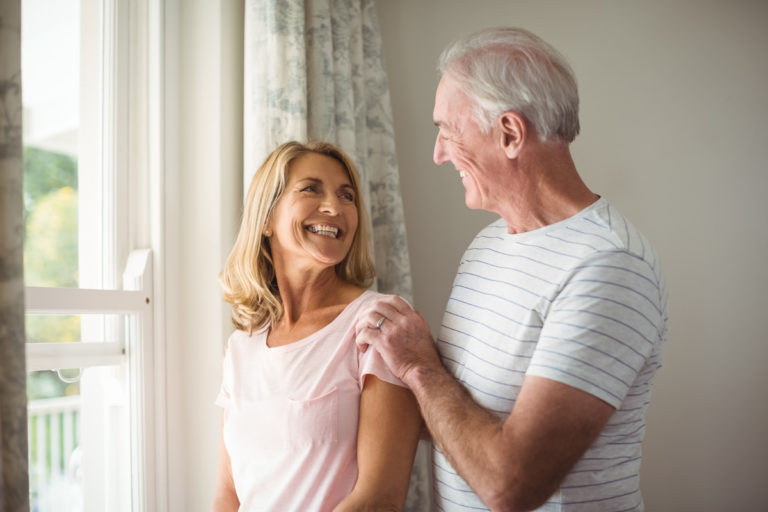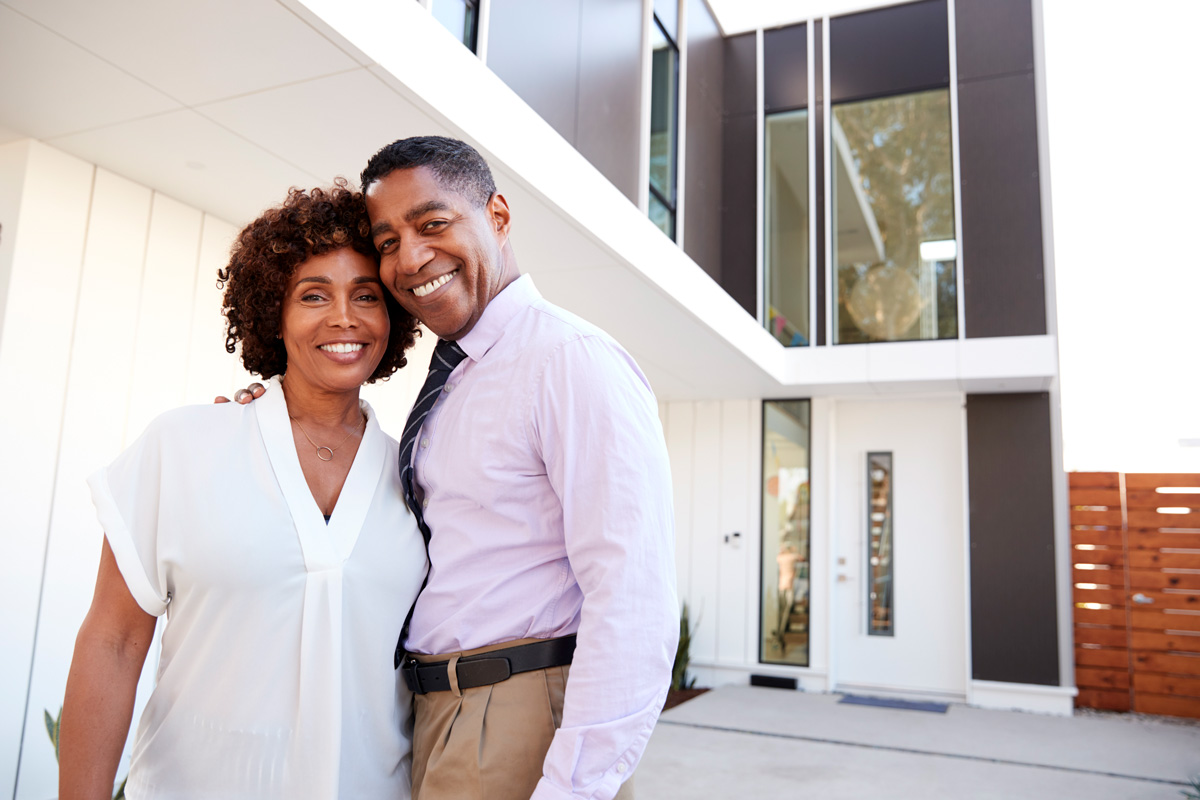We’ve all learned a lot about ourselves and paid more attention to our homes during the pandemic. Many of us are truly appreciating the value of our homes through the recent shelter in place. COVID-19 has given many of us a newfound gratitude for our homes and the protection they offer! Plus the vulnerable and elderly population need to be kept especially safe and secure since the pandemic has begun. We’ve seen the value of living in a private home rather than high risk assisted and independent living facilities. AARP shares: “Older people are at higher risk for COVID-19, the disease caused by the new coronavirus. 2 in 5 U.S. deaths from COVID-19 have occurred in nursing homes and other long-term care facilities.”
Mature homeowners are now coming into an important time of prepping for “aging in place”. Everything has been so unpredictable in 2020, but one thing we can count on is aging. We don’t know when the coronavirus will be over, so it’s vital to plan home renovations to make sure your living space is comfortable long term! You may be thinking, “I feel healthy, this won’t be a problem for a while down the road.” Aging changes everyone. No matter how fit we are and how much we take care of our bodies, eat right, exercise and keep our minds peaceful, aging changes us despite all this.
What does it mean to “age in place” properly?
According to Senior Living: Aging in place means a person being able to live in the place of their choice without losing their quality of life when they reach senior age. But ideally what aging in place should be addressing is not just to maintain the quality of life that the person is used to, but also to make it better whenever possible. To live out later years as comfortably as possible, financial and economical plans should be put in place from your earliest working years. Aging in place though it refers to persons of retirement age should concern everyone as soon as possible from their earliest years of one’s career. Plans for retirement should thus be created as early as possible from your younger years and changed, revised, adjusted according to changing needs and requirements.
Aging in place means you will ultimately need to ask yourselves some hard questions:
- What is the ideal way for you to spend your retired years?
- Where exactly – type of home environment you see yourself in – individual, community, assisted?
- What special health care do you require or think you will ?
- What other types of supplementary services you may require ?
- What options have you provided for in case of emergencies, life changing events, accidents etc ?
First thing’s first…Is your home equipped with everything you will need to age in place comfortably?
After spending significant time indoors, you’ve probably had the opportunity to notice which areas of your home are already or soon to become problematic. Let’s face it, as time goes on our bodies can’t handle the stairs or reaching in high cabinets like we used to be able to. Do you feel the stairs becoming increasingly difficult to climb each night? Are the door handles and hardware around your home causing unnecessary pain in your hands? Would a curbless shower and no skid surface make bathing less stressful?
Don’t get overwhelmed by the prospect of home renovations, Michael Gould is here to guide you in taking baby steps to prepping your home for the future. Start thinking about what your biggest daily struggles are within your normal routine.
Create a list of all the challenging areas of your living space. Aging in place renovations have a wide range of affordable options. Stop pushing back these renovations by saying “it can wait “ or “it’s not the right time for such a big project”. Before you know it, there may be a decline in health or accident that requires changes to be made. Your health truly does depend on the safety of your home, so prepare ahead of time!
A few main places in your home everyone should evaluate include:
- General Design (open floor layout, bright lighting, stairs, wide doorways)
- Kitchen (sink height, cabinets, easy to use handles)
- Bathrooms (toilet height, walk in shower/tub, handrails)
- Bedroom & Closets (low bed height, handrails, spacious closets)
- Laundry Room (front load washer & dryer, easy to use and reach)
“More than 300,000 people are hospitalized each year from broken hips, and 95 percent of these fractures are the result of a fall at home.” Centers for Disease Control (CDC)
Taking a look at the kitchen…
Has it become increasingly difficult to put away groceries in your kitchen cabinets? It may be time to update your kitchen to fit your needs. Make space for your walker or wheelchair. Cabinets that have pull down shelves, lower turning storage spaces and proper shelving can reduce the opportunity for accidents like dropping glass jars or straining a muscle. This could potentially cause you bodily harm. Adjust kitchen countertops. Standard kitchen counter tops stand roughly 34 inches high. A proactive approach for seniors includes installing cabinets and countertops at 30 inches high. This minor adjustment can make it significantly easier for someone using a wheelchair or scooter to prepare food. Whether or not chair bound, a low counter top eliminates the risk of accidents.
Making your way upstairs…
Are the stairs and hallways now obstacles? The steps may be too much for your knees or the space is too crammed for your walker to fit through. Walking up and down the stairs may become a possible risk to your health. Many homes are built with doorways 32 inches or more narrow. A great option is to expand the doorway in order to accommodate a wheelchair or other mobility device. All our team needs to do is to replace the existing frame, add insulation, drywall and paint. Additionally, some trim and electrical work may be needed.
The potential for falling becomes greater due to aging, certain medications, and uneven flooring. “Falls are a serious health issue among seniors. While falls in the general population usually come about due to dangerous work or leisure activities, seniors are at greater risk of falling in their day-to-day activities. Medications, vision impairments, and general weakness can combine with environmental factors to put seniors in danger of seriously injuring themselves in any fall.” Aging.com
One solution is creating a first-floor master bedroom suite. By creating a master bedroom on the first floor, you or your loved ones will maintain independence and feel secure by not avoiding the challenge up walking upstairs. As you plan your home to age in place, small changes such as conveniently placing the washer/dryer, full bathroom, and a bedroom on the ground level will set you & your loved ones up long term success!
Practicing personal care with ease…
Taking showers and baths can cause a lot of anxiety. One false move or slip can be very harmful. What was once simple has now become a bit of a challenge. You’re still very capable of taking care of yourself but you can sense the danger when stepping in and out of a slippery shower or bath. Even simple actions of standing up after using the toilet can put your wellbeing at risk.

”In the elderly living in the community, 30%–50% of falls are due to environmental causes (eg, poor lighting, slippery floors, and uneven surfaces). According to Medical Alert Advice: It is estimated that one third of adults age 60 and over have difficulty climbing into or out of their bathtub or shower. Consider remodeling this important, daily space as a precaution. Making changes – such as adding grab bars added to the shower and tub, easy to access cabinetry, no skid surfaces, curbless showers, step-in tubs, and higher toilets – will lower the risk of falling significantly! By creating a bathroom with these design features in mind, you (or your elder parents) can maintain privacy and independence. Installing heavy grab bars can help prevent falls related to slippery bathtub floors and shower stalls. Our team can work with an existing space, or even build a custom solution.


